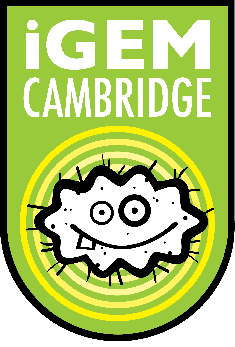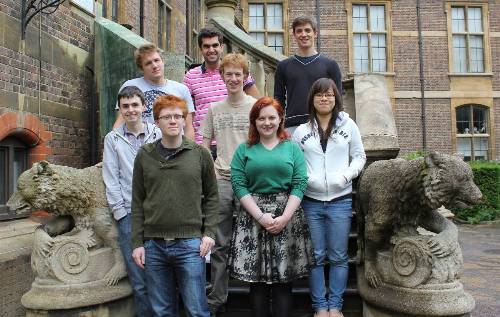Team:Cambridge
From 2012.igem.org
| Line 18: | Line 18: | ||
|[[Image:Cambridge_logo.png|200px|right|frameless]] | |[[Image:Cambridge_logo.png|200px|right|frameless]] | ||
| - | {|align="justify" | + | {|align="justify"| |
| - | |'''''Abstract:''''' | + | '''''Abstract:''''' |
| - | | | + | |- |
| - | | | + | |Previous iGEM teams have charaterised an impressive array of inducible promoters, along with other elements of biosensing circuitry. But, to date, the output from each is not consistent and, in spite of the unifying biobrick standards used, do not necessarily couple together to make integrated test kits. The Cambridge iGEM 2012 team aim to take the true meaning of biobricks to heart, by creating an open and applied biosensor standard available for use by all subsequent teams, as well as, potentially, by industry and researchers in the field. |
| - | Previous iGEM teams have charaterised an impressive array of inducible promoters, along with other elements of biosensing circuitry. But, to date, the output from each is not consistent and, in spite of the unifying biobrick standards used, do not necessarily couple together to make integrated test kits. The Cambridge iGEM 2012 team aim to take the true meaning of biobricks to heart, by creating an open and applied biosensor standard available for use by all subsequent teams, as well as, potentially, by industry and researchers in the field. | + | |
The protocol aims to be modular in design, allowing any biosensor built on this standard to be used and the output analysed with the same standard equipment which we will prototype ourselves. Existing and novel biosensors will be adapted to use light as an output to allow computer interfacing. We aim to use two luciferases, one to give a read-out of the input, and the other to act as a standard to allow fluctuations in colony size to be taken into account, giving a robust, reliable, and quantitative output. Furthermore, we shall be using ''B. subtilis'' as our chassis, with the view to making the most of its spore-forming capacity to make desiccated, "just add water" kits with long shelf lives. Guidelines on how to adapt a given sensor to this system will be developed for other users, with the potential for an open database of response curves. | The protocol aims to be modular in design, allowing any biosensor built on this standard to be used and the output analysed with the same standard equipment which we will prototype ourselves. Existing and novel biosensors will be adapted to use light as an output to allow computer interfacing. We aim to use two luciferases, one to give a read-out of the input, and the other to act as a standard to allow fluctuations in colony size to be taken into account, giving a robust, reliable, and quantitative output. Furthermore, we shall be using ''B. subtilis'' as our chassis, with the view to making the most of its spore-forming capacity to make desiccated, "just add water" kits with long shelf lives. Guidelines on how to adapt a given sensor to this system will be developed for other users, with the potential for an open database of response curves. | ||
Revision as of 15:56, 3 July 2012
| Home | Team | Official Team Profile | Project | Parts Submitted to the Registry | Modeling | Notebook | Safety | Attributions | Sponsors |
|---|
| Previous iGEM teams have charaterised an impressive array of inducible promoters, along with other elements of biosensing circuitry. But, to date, the output from each is not consistent and, in spite of the unifying biobrick standards used, do not necessarily couple together to make integrated test kits. The Cambridge iGEM 2012 team aim to take the true meaning of biobricks to heart, by creating an open and applied biosensor standard available for use by all subsequent teams, as well as, potentially, by industry and researchers in the field.
The protocol aims to be modular in design, allowing any biosensor built on this standard to be used and the output analysed with the same standard equipment which we will prototype ourselves. Existing and novel biosensors will be adapted to use light as an output to allow computer interfacing. We aim to use two luciferases, one to give a read-out of the input, and the other to act as a standard to allow fluctuations in colony size to be taken into account, giving a robust, reliable, and quantitative output. Furthermore, we shall be using B. subtilis as our chassis, with the view to making the most of its spore-forming capacity to make desiccated, "just add water" kits with long shelf lives. Guidelines on how to adapt a given sensor to this system will be developed for other users, with the potential for an open database of response curves. We will also investigate the potential of using systems of biosensing other than the conventional inducible promoters, such as split luciferase systems and potentially riboswitches.
|
 "
"

